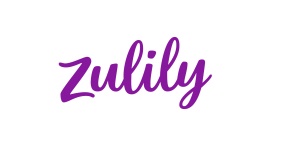By Rieva Lesonsky
Chances are it’s been a while since you rebranded your small business. It’s easy—and common—for small business owners to overlook the need for rebranding, since most of your time is dedicated to sales or business development.
But rebranding can do more than give your business a new or updated look. It sends a message to current customers and clients, as well as prospects that your company is on top of trends and that you’re paying attention to market conditions.
 To find out more about rebranding we talked to Naama Bloom, VP of Brand Marketing at Zulily. The retail giant recently debuted a new look-and-feel—including a refreshed logo and updated brand colors. The company’s new logo was created by an in-house design team and was inspired by Zulily’s “innovation, originality, creativity and visionary thinking.”
To find out more about rebranding we talked to Naama Bloom, VP of Brand Marketing at Zulily. The retail giant recently debuted a new look-and-feel—including a refreshed logo and updated brand colors. The company’s new logo was created by an in-house design team and was inspired by Zulily’s “innovation, originality, creativity and visionary thinking.”
Zulily may be a large e-commerce company today, with 6.6 million active customers, but it launched in 2010 with only 10 employees.
Bloom has great advice all small businesses can embrace and adopt.
Rieva Lesonsky: What are first signs it might be time to rebrand?
Naama Bloom: As marketers, it’s our job to deeply understand how our customers—and future customers—respond to our brands. But there are a couple of instances where it’s crucial. First, if your company is approaching a major milestone, or shift in its business model, it’s an appropriate time to think about evolving a visual identity. Second, it’s imperative to keep a pulse on industry trends—for example, are more customers experiencing your brand on mobile?
At Zulily, we approached our rebrand deliberately with the goal of enhancing existing Zulily equity while also building a long-term, durable visual identity to drive recall as we strive to become a household name. We made the decision after thorough research and conversations with our customers and employees.
Lesonsky: Does a rebrand need to be encompassing or can you only rebrand some elements?
Bloom: Rebranding should always be done with specific goals in mind. Internally at Zulily, we called our own rebrand a brand “refresh”—we really looked at our process as an evolution of what we had already built.
Bringing a new perspective on a handful of elements can be just as effective as a total brand overhaul, depending on the output you’re aiming for. The main goal should be consistency in how your customers experience your brand.
Lesonsky: Where do you start—particularly if you’re a small business?
Bloom: The best place to start is to go to the data your customer is already sharing with you. What are your customers telling you? And then, it’s important to remember that behind the data, there is a beating heart. Try to find the human story behind the facts and figures.
At Zulily, the brand refresh process was entirely driven by Zulily employees, which tied back to our culture of having a bias to build.
Lesonsky: Can you launch your rebrand in phases?
Bloom: Change will always incite strong reactions. That’s why it’s important to launch in phases: first, to your employees. Then, to your partners. And last, to your customers.
By being deliberate and thoughtful about the process, you can tell an effective story about how and why you’re making the decision.
Lesonsky: Is there a set time period for rebrands—for instance, every 2 years?
Bloom: I would not recommend rebranding frequently—this is a major undertaking for a brand and, if done well, a brand refresh should last for years (even decades!).
Lesonsky: Part of the Zulily rebrand was focused on mobile. What do you need to keep in mind about mobile when you rebrand?
Bloom: Mobile is a crucial channel for any business, no matter the size. At Zulily, 72% of orders come from mobile (as of Q318) and thus, we are always optimizing for a great mobile experience.
First, it’s crucial to understand mobile screens. They’re small. Second, it’s important to understand how your customers really use their mobile devices. Are they interacting with your brand through your company’s app, on social channels, or on email? You must ensure the logo looks good where your customer interacts with your brand.
For Zulily, we wanted to ensure that our colors really stood out, and that they were memorable to our new and current customers, especially in the app store. Additionally, we wanted to ensure that our whole brand name and logo could be clearly seen as a profile image on platforms like Instagram or an app icon, as we’re focused on reinforcing our full name to a wider audience.
Lesonsky: Zulily’s purple color is very memorable. How do you pick a color?
Bloom: Color is crucial to a brand’s perception, recall and ultimately, awareness. We were very strategic in our color selection—we wanted the new brand color to align with our brand ethos and personality.
At Zulily, we see purple as a color that expresses innovation, originality, creativity and visionary thinking—which are some of the most important qualities we see in Zulily as a brand and employer. As such, we focused on two main colors, Discovery purple (our main brand color, building on the existing purple we have had since our start) and Empowered Plum (used in support), with a few accented colors for digital channels that express certain characteristics with our brand: Daybreak Blue, to represent the new store that launches every day. Smart white adds Balance, Contrast. And, Rich Black adds an element of sophistication and elegance.
Lesonsky: When you rebrand is it a good (or bad) idea to embrace current trends? Or can that quickly date your brand?
Bloom: When rebranding, business trends can be a factor – but not the entire equation. Organizations need to strike a balance between finding a logo that speaks to current design trends, but also won’t become dated in the immediate future.
A good gut-check for this is taking the time to craft a logo that has the look-and-feel of your brand and really brings it to life. If your logo speaks to who your company is, and who you are striving to be, it won’t become dated too quickly and will ring true for a longer period of time.
Lesonsky: How do you know if your rebrand is effective?
Bloom: You can determine if your rebrand is effective by keeping a pulse on the reactions from three groups: existing customers, new customers and employees.
Existing customers should feel like a brand they know and love has undergone and exciting makeover, and they should feel an even larger sense of loyalty to your brand.
For new customers, the (perhaps obvious) goal is to draw them to your brand, to intrigue them and to drive purchase and engagement.
And we can’t forget an extremely important group: Employees. If your rebrand is successful, employees will have an increased sense of buy-in and feel like they were a part of the process and like the new company brand reflects who the company is and who it strives to be.
You can measure effectiveness via polling and by asking for feedback on a regular basis.
Rebrand stock photo by Mohd KhairilX/Shutterstock







